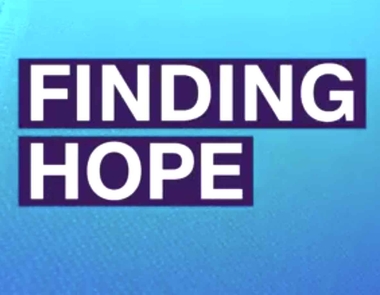Talking and sharing are key to suicide prevention

I talk about suicide every day. I've seen suicide from more angles than I'd wish on anyone: I've lost friends to suicide, seen the immediate aftermath of a suicide death, and survived two of my own suicide attempts. In the years after my most recent attempt in 2006, it felt like I was alone in what I'd been through. I didn't know anyone else who was open about having attempted suicide and lived; all I could find online were statistics, and a handful of anonymous stories wrapped with happy endings like neat little bows. They lacked the warmth of human idiosyncrasy. I couldn't connect.
Thanks to a long history of prejudice, there's a culture of silence around disclosure of suicidal thoughts and behaviors. No one wants to be kicked out of college, discharged from the military or fired from a job for speaking the truth or asking for help. These are real consequences faced by real people every day. The culture of silence prevails, and it's got to stop.
Attempt survivors have a lot to teach us about suicide. But we have to be there to listen.
In 2010, I started interviewing and photographing attempt survivors as part of a series called "Live Through This." I wanted to give them a platform to talk openly and honestly about their experiences with suicidality -- the messiness of the ride, the struggle, the resilience -- as a way to reclaim their narratives in a public space, using their names and likenesses with pride. No more silence. No more hiding.
Statistics paint us a generalizable picture of the population affected by suicide -- rates are highest among white men of middle age and beyond; female-identified black teens have higher attempt rates than their peers; 40% of transgender folks attempt suicide in their lifetime, etc. -- but we often get lost in the statistics. We forget that suicide is a deeply complex, deeply personal issue, unique to every person it affects.
I've interviewed and photographed 185 suicide attempt survivors in 36 US cities. They range in age from 19 to 69, with different upbringings, sexual orientations and gender presentations, and a variety of trauma experiences. They come from different socioeconomic, professional, racial and religious backgrounds. Suicide doesn't care who you are. Like little else in this world, it doesn't discriminate.
According to a Centers for Disease Control and Prevention report released recently, 54% of those who died by suicide in the United States between 1999 and 2016 did not have a known mental health diagnosis, which indicates that systemic issues and devastating life events play a more impactful role in suicidal despair than we've previously acknowledged. We can't keep looking at suicide through the myopic lens of mental health. Suicide is a complex issue. Linking it solely to mental health is reductive and doesn't tell the whole story. It's a much larger public health issue, with a PR problem. We need to connect in order to care. The overwhelming majority of those already engaged in the conversation have previously been affected by suicide in some way; everyone else is disengaged and disinterested.
In the past, we've seen taboo subjects destigmatized when more people began to talk about them. Women in the 1950s were both embarrassed of and afraid to talk about the lumps in their breasts that threatened their lives, but a wave of feminist-powered activism in the 1970s changed everything. One by one, women spoke up. One by one, their communities listened. Now, we no longer fear saying the "C" word out loud. Hundreds of millions of dollars in federal research funding are earmarked for breast cancer annually. Support groups are available and encouraged for those affected. Every October, we're awash in a sea of pink ribbons, worn by those currently suffering, those who survived and those who support them. Rates of death attributed to breast cancer have been decreasing since 1989.
Suicide rates have been rising steadily since 1999. We need a similar sea change in suicide prevention.
Sharing a personal story about suicide is a revolutionary act. As those around you stand up and share, listen, validate and stand with them. Strengthen bonds to your community authentically and consistently, both online and off. Suicide is a result of despair and isolation, catalyzed by life events that feel insurmountable to the person affected, and complicated by the systems in place around us. Connection is the opposite of isolation and a salve for despair.
Talk about suicide. Say the "S" word. Honor lives lost to suicide by remembering them as they were in life, not by how they died. If you're worried someone you know may be struggling, ask him or her if they're having thoughts of suicide and connect them to appropriate supports. Check in. And then check in again. Learn your local and national suicide crisis resources and save them in your phone. Donate to organizations working to prevent suicide. Fight for federal funding for suicide research. Get trained in crisis intervention. Volunteer for the National Suicide Prevention Lifeline, Crisis Text Line or your local crisis center.
By Dese'Rae L. Stage, CNN. The-CNN-Wire™ & © 2018 Cable News Network, Inc., a Time Warner Company. All rights reserved.
The Gayly – June 23, 2018 @ 5:30 p.m.





